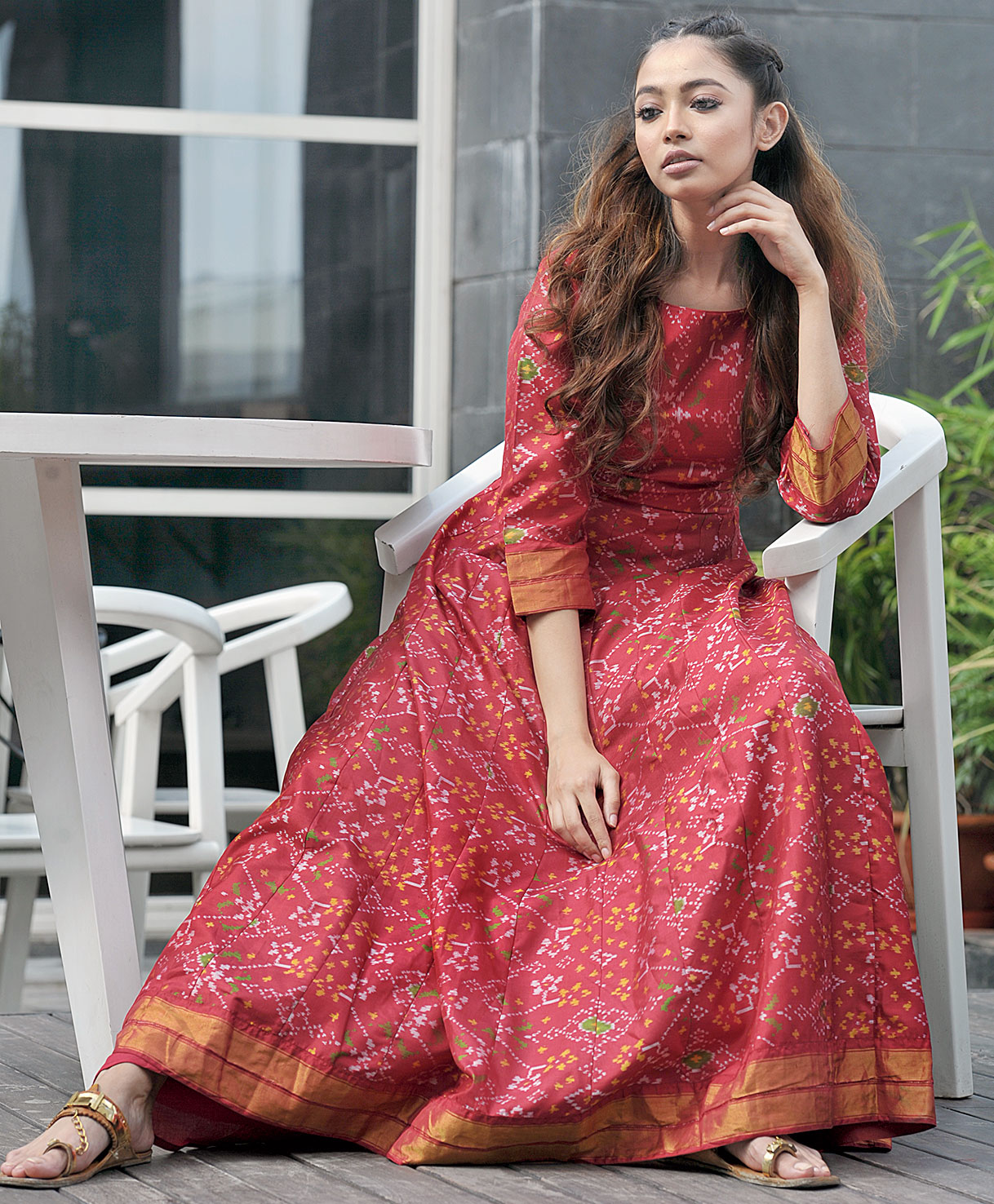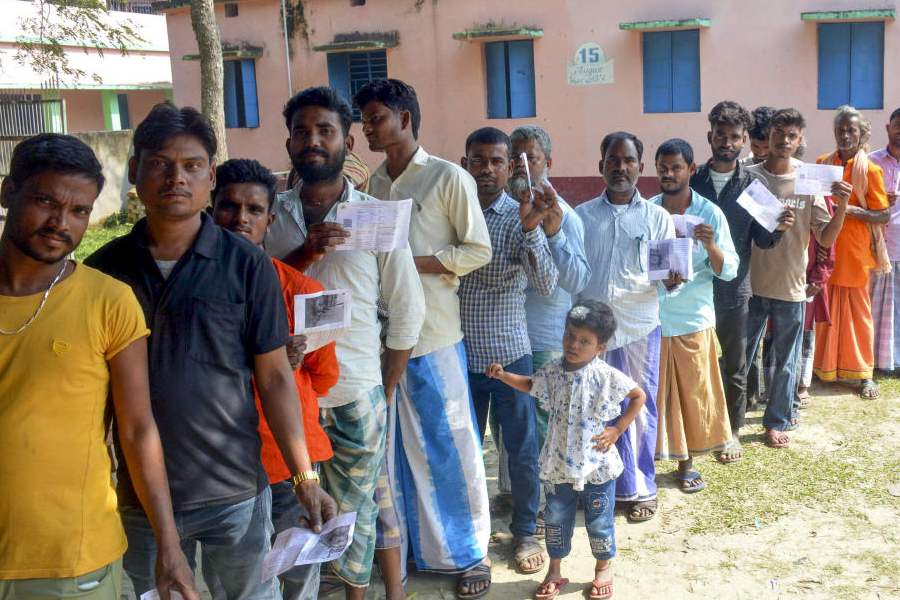What is patola?
A fabric traditionally woven in the Patan region of Gujarat. The patola yardage uses pure silk thread with a double-ikat weave — double warp and weft threads. A labour-intensive craft, a single patola yardage takes days to weave and is a collector’s item that also found place in the wardrobes of the erstwhile aristocracy.
Legend says that over 700 Patola weavers came to the palace of Raja Kumarpala in the 12th century. The ruler used to dress in patola silk on special occasions. Woven with extreme dexterity, the front and the back of these textiles were indistinguishable from each other, making them the ultimate symbol of wealth and status. Yet today, only two of the 700 original families continue to weave this legendary textile which (was) once synonymous with royalty — says designer Sabyasachi Mukherjee’s Instagram post on July 30, which tells us a little about what his collection Kesribai Pannalal Couture 2018, to be unveiled tonight, will be all about.
The vibrant signature weave of Gujarat, which will be a highlight of Sabya’s collection, is a favourite of sari connoisseurs, and yet the traditional patola weaving community in Gujarat has been dwindling over the years. The fabric has recently been under the fashion spotlight, with some of the leading designers promising to give it a fresh lease of life. Alongside Sabyasachi, there’s Gaurang Shah, Laju Shaparia, Ayush Kejriwal and Amit Aggarwal experimenting with the rich, colourful hand-weave, which has resulted into the patola undergoing ample innovation and experimentation — like the other yardages — to make it more in sync with modern wardrobes.
While some designers, like Amit, are using the fabric in contemporary silhouettes, others like Calcutta-based designer Pinki Sinha are focusing on a single-ikat weave, instead of the traditional double-ikat weave, to bring it within the reach of a lot more people.
Designer Pinki Sinha puts together a patola look-book for t2


Pinki Sinha, Calcutta

Known for her Benarasi collections, Pinki decided to work with the patola after meeting the Salvis, the patrons of this traditional handicraft. “When I got in touch with the Salvis, they were very supportive as they also want to see this craft do well. We discussed how we wanted to make it different, as they usually make the double-ikat patolas, which are very expensive,” said Pinki. The meeting has resulted in her latest patola collection comprising saris, anarkalis, kurtas, angarkhas, dupattas, jackets and separates.
“The traditional patola is the double-ikat one, which is a luxury item and is very expensive with double warp and weft. We are working on single-ikats, making it a little more affordable. We use pure, natural silk though,” added Pinki, whose new collection is available at 85 Lansdowne and online at @vishwabyps.
Gaurang Shah, Hyderabad

A “traditionalist” at heart, Gaurang Shah has retained the traditional motifs with contemporary colours like purple, orange, fuchsia and turquoise.
“In my collection, Stridhan, my vision was to revive the Patan patola from Patan, where a double-ikat Patolu sari takes nearly one to two years to weave. I infused more Indian crafts into the fabric to pay homage to the masters by combining Patolu with Parsi gara embroidery, Kanjeevaram borders, gotas and fabric textures,” said Gaurang, who introduced motifs of Patolu with inspirations from Rani-Ki-Vav (an ancient stepwell in Patan), like the rattan chok bhat and nari kunjar bhat.
.jpg)
“Patan patola is extremely intricate and a difficult weave, and only three centres in India have the ability to weave them. To sustain excitement among my weaver clan, I help them with techniques to make their looms adapt to change. I also had to give them the confidence, combining my creative approach and designs with their artistry that help bring a whole new appeal,” Gaurang added.
Ayush Kejriwal, Glasgow

“Flamboyant and vibrant are two words that spring to my mind when I think of patola saris. I love their rich colours and bold motifs — a divinely beautiful nine yards of unyielding labour,” says Ayush.

The designer who lives in Glasgow but gets his saris woven from all over India is currently working on new patola designs where he is using traditional colour palettes and weaving techniques but with modern motifs. “I love playing with clashing bold-coloured blouses and sometimes I also add an embroidered border and crochet lace to them,” he added.
Ayush feels the expensive weaving technique is the biggest challenge facing the craft. “A Patan patola sari ranges from Rs 1 lakh to Rs 6 lakh. I have started working with weavers from Hyderabad, Patan and Rajkot who make equally beautiful single-ikat patola that are not as expensive.”
Laju Shaparia, Rajkot

Her eponymous label can be credited for reviving the antique patola craft and making it a coveted bridal couture. This label from Gujarat transforms the traditional weave into a fashion piece. Laju’s handwoven silk saris, which can be worn both ways, are a modern take on the age-old craft. However, the signature style of the label is still centred around traditional designs and motifs, like the navratna and the vorahgaji.

“Patola is an heirloom handwoven craft, so its steep price becomes an obstacle for many. Therefore we work with different yarns such as cotton and silk-cotton and a blend of single and double-ikat, making the patola popular among the youth as well,” said Laju. Making it affordable and the availability of skilled weavers for this labour-intensive craft are the challenges she faces.
Text: Anannya Sarkar
Pictures: Pabitra Das
Make-up: Bhaskar Biswas
Location: The Salt House










